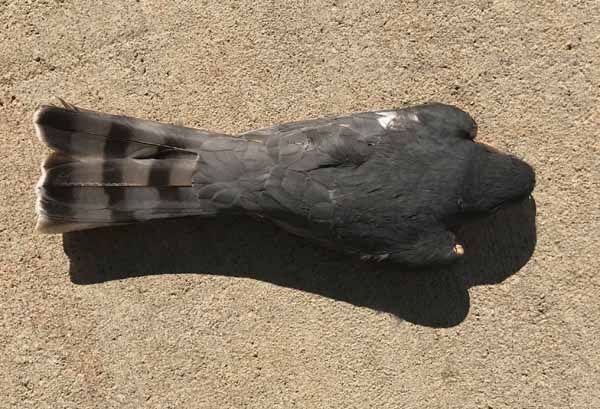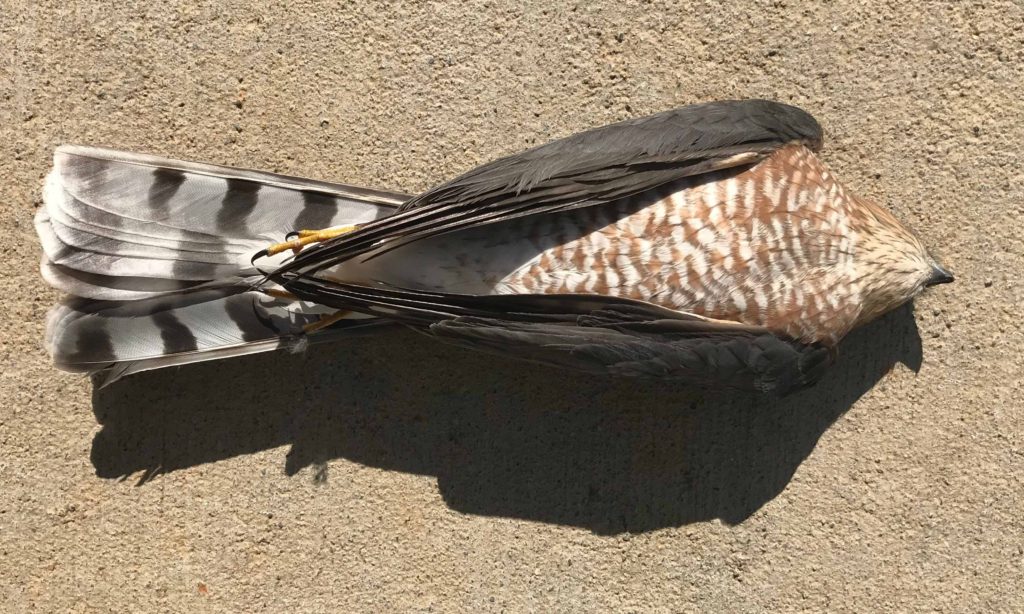A few days ago Leah and I heard a loud thump that sounded like it came from our hall bathroom. I went in to check, but found nothing to account for the noise. Later I went outside and found this bird lying in the driveway, close to the house.


It seems to be a sharp-shinned hawk (Accipiter striatus), a type I was not familiar with. It was lying close to the window in one of our bedrooms, the one we use for an office. The bedroom is next to the bathroom, which explains why we thought the sound came from the bathroom.
It’s easy to understand how this happened. With very little light inside the room, the window makes a good mirror. The hawk undoubtedly thought it was flying through an opening rather than a hard surface.
The sharp-shinned hawk is the smallest hawk in the US and Canada. It summers in the far north of Alaska and Canada and winters as far south as Panama. It’s a little hard to figure from the maps of distributions, but it seems that they are around our area during non-breeding parts of the year, but apparently are so secretive that they are rarely seen.
They are the most strong sexually dimorphic of North American raptors. The males average under two-thirds the mass of females.
Our house is on top of the ridge of Lavender Mountain within a mixed hardwood and pine forest, which is their preferred habitat.
The name comes from the sharp, laterally compressed keel on the leading edge of the legs.
We see other types of hawks pretty often, but I had never before seen a sharp-shinned hawk. It’s unfortunate that my first sighting is of a dead bird, and one killed by our house at that.
This is such a sad story. I’m so sorry for that Sharp-shinned beauty. We had a few bird/window encounters when we were living in Grass Valley, and they are always such a bummer. I hope the next time you see a Sharp-shinned hawk it is under much better circumstances.
Robin — It was very sad. Now that I know what to look for, I’ll try to pay more attention to the birds around here, but from what I read, they are not often sighted except during migration. They tend to fly through the woods rather than above.